A supportive medical device intended to stabilize the pelvis is commonly referred to as a pelvic binder. In order to make room for the developing baby, the pelvic area changes significantly during pregnancy, which can cause instability or discomfort. By offering support and compression to reduce pain and stop additional issues, a pelvic binder aids in managing these changes.
What is a Pelvic Binder?
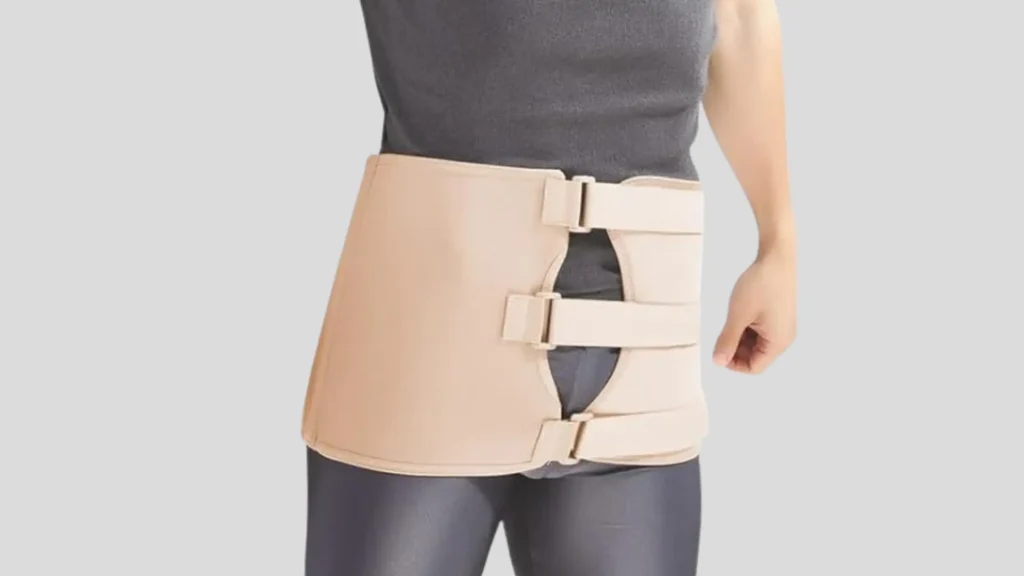
A pelvic binder is a type of medical garment or orthopedic support designed to stabilize the pelvis. These binders are typically used in trauma or injury management but have found widespread use in obstetrics, especially during pregnancy. In pregnancy, pelvic binders offer support to the pelvic girdle, which may be affected by hormonal changes and the mechanical demands of carrying a growing baby.
Pelvic binders are designed to reduce the mobility of the pelvic joints, which can help decrease pain and discomfort, especially in conditions like symphysis pubis dysfunction (SPD), a common condition in pregnancy where the pubic symphysis (the joint between the two halves of the pelvis) becomes too loose, causing pain and instability.
The Role of Pelvic Binders During Pregnancy
Pregnancy makes the body relax by releasing relaxin, a hormone that loosens up the pelvic ligaments and muscles to be ready to deliver the baby. There is however the problem of causing instability, misalign time, and discomfort especially during the second and third trimesters. The pelvic binder helps to provide external support to the pelvic region, reducing the amount of strain on the muscles, ligaments, and joints.
By using a pelvic binder, a pregnant individual can experience significant relief from lower back pain, pelvic pain, and discomfort from conditions such as SPD. The binder provides support to keep the pelvis in alignment with the rest of the body and evenly distribute pressure, which can help make day-to-day tasks more comfortable.
Pelvic Binder Placement: How to Apply It Correctly

Proper pelvic binder placement is crucial to ensure that the device provides the maximum benefit and comfort. Not only is there a lack of necessary support, but incorrect positioning of the binder can, in addition, be a source of discomfort or exacerbating pre-existing conditions.
Key Considerations for Correct Placement
Positioning the Binder:
- Place the pelvic binder snugly across the lower abdomen and hips. It should wrap around the pelvic region, starting from just above the pelvic bones and extending down to the top of the thighs.
- The main aim is to create a stable compression around the pelvic joints to reduce any excessive movement that might lead to pain or discomfort.
Adjusting the Fit:
- The binder should be tight enough to provide support, but it should not be so tight that it restricts blood flow or causes discomfort. Ideally, the individual should feel supported but not restricted.
- Depending on the design of the binder, it may have adjustable straps or Velcro to customize the fit for comfort.
Position for Comfort:
- Make sure the pelvic binder is positioned evenly around the pelvis to ensure there are no uneven pressure points. It should not dig into the skin or cause abrasions, as this could lead to skin irritation over time.
- After applying, test its placement by walking around gently. If any area feels too tight or uncomfortable, adjust the fit until it feels right.
How to Apply the Pelvic Binder
Step 1: Start with the binder and wrap it around the pelvis area, first around the back, then around the front.
Step 2: Fix the Velcro or tighten the straps and ensure that the binder fits tightly on the pelvic area.
Step 3: After fitting it, ensure that the binder is in the right position so that it is comfortable and exerts an equal pressure across the pelvis.
Pelvic Binder Brands for Pregnancy Support
1. TPod Pelvic Binder

Often used for pelvic fractures and increasingly for pregnancy-related discomfort, the TPod Pelvic Binder is a specialized pelvic support device made for extreme pelvic instability. The fact is that it is an effective analgesic for conditions such as Symphysis Pubis Dysfunction (SPD) and provides local stability of the pelvic joints. The binder is also highly regarded because it is customizabled to fit and offer therapeutic value especially in late pregnancy where pelvic pressure is at its highest.
Key Features:
- Enhanced compression for more severe pelvic pain, providing targeted relief.
- Adjustable Straps for a customizable fit that adapts to body changes.
- Targeted support focusing on the pelvic joints to improve posture.
2. SAM Pelvic Binder
The SAM Pelvic Binder is widely used for both trauma and pregnancy care, offering reliable, long-term pelvic support. It has been designed in a manner that it fits perfectly without any danger and comfortably compressing a little; hence, this suits best when dealing with chronic pain and pelvic instability. The binder is quite successful when used by those with SPD, with the feeling of being able to move freely while ensuring stability in daily tasks.
Key Features:
- Comfortable and Secure Fit designed for extended wear without discomfort.
- Simplicity and Durability ensure it lasts throughout pregnancy with regular use.
- Wide Coverage for even distribution of pressure across the pelvis, reducing pain.
3. Belly Bandit Pelvic Support
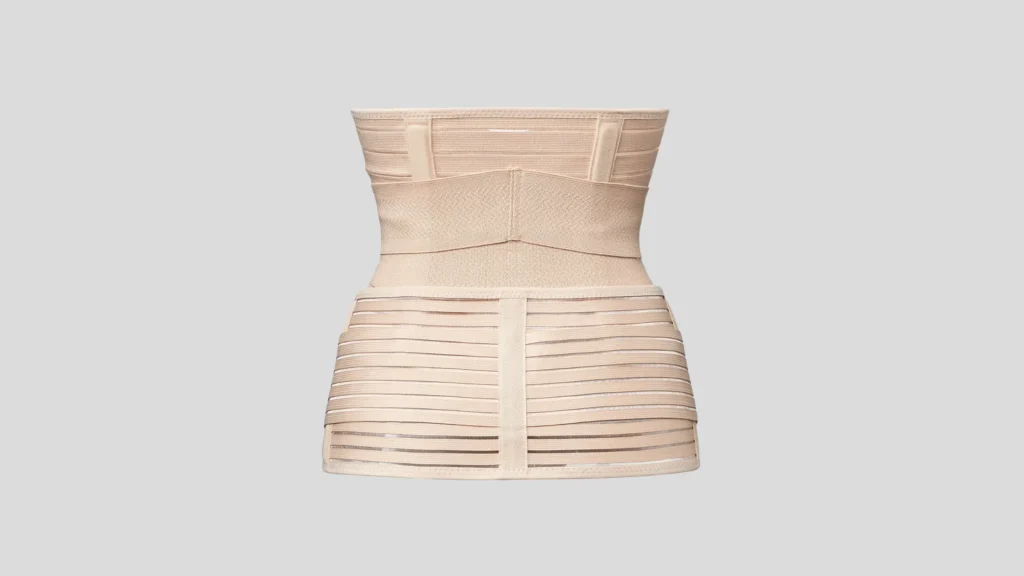
Belly Bandit has an outstanding history of maternity support products. Their Pregnancy and Postpartum Pelvic Support Binder is specifically tailored to pregnancy and the essential support during postpartum recovery, with the aim of resolving issues with pelvic pain and offering benefits to the lower back and pelvis. The binder is manufactured of light flexible material and could be worn a major period of the day to feel comfortable in different activities.
Key Features:
- Breathable material for all-day wear without skin irritation or discomfort.
- Adjustable fit to ensure optimal pelvic support for various body types.
- Postpartum Use makes it versatile for recovery after childbirth, offering continued support.
4. Serola Pelvic Belt
Serola Pelvic Belt can help avoid pelvic instability and pain by dependably compressing the pelvis and sacroiliac joints. It works notably well among individuals who carry on with an active life envelope themselves with pregnancy-related discomfort. This pelvic belt is prescribed to those individuals who require regular use to provide support, but have full mobility and comfort.
Key Features:
- Targeted compression to relieve pelvic and sacroiliac joint pain caused by misalignment.
- Comfortable, Lightweight Design that doesn’t bulk up under clothing, ensuring discretion.
- Ideal during pregnancy activity as it enhances pelvic stability when carrying out physical activities or other exercise regimens.
5. Maternity Support Belt by Amazon Essentials
Amazon Essentials offers an affordable and effective maternity support belt that acts as a pelvic binder. This belt gives the needed support to the lower back and pelvic region, particularly during pregnancy. The belt offers softness in design and adjustability with the comfort it gives.
Key Features:
- Affordable and Practical with no compromise on quality, making it budget-friendly.
- Adjustable Velcro Straps for easy customization, ensuring a personalized fit.
- Cozy Soft, elastic material is used in the fit design to accommodate expanding bellies.
6. Medline Pelvic Binder
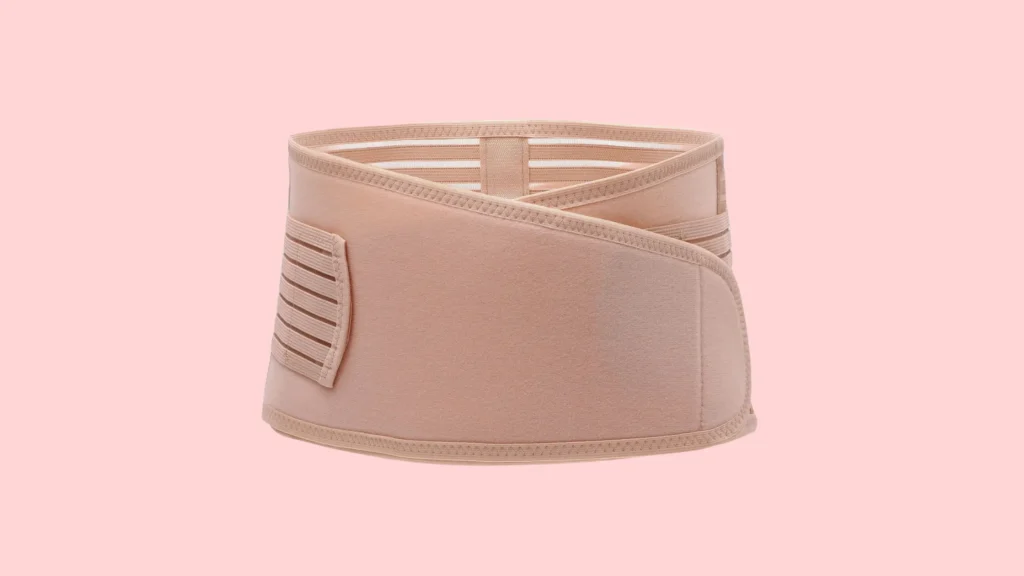
The pelvic binder from Medline, a reputable brand in the medical field, provides clinical-grade support for pelvic region stabilization during pregnancy. It has applications in clinical and at-home conditions and provides optimal feedback in terms of compression and comfort among the expecting mothers. This binder can be recommended as a go-to choice for people with long-term needs of consistent pelvic support.
Key Features:
- Clinical-Grade Quality is designed for hospital and home use, providing professional-grade support.
- Simple design makes it easy to apply and adjust for quick relief.
- Durable Materials ensure long-lasting support even with regular use during pregnancy.
7. Gabrialla Maternity Belt
This Gabrialla Maternity Belt was specifically made to alleviate pelvic pains and instability, providing full support to the back of your back and pelvis, and abdomen. It is perfect in addressing the discomfort associated with pregnancy and offers holistic treatment to people with pelvic imbalance.
Key Features:
- Full-Support Design provides abdominal and pelvic support to reduce strain on muscles.
- Adjustable compression for a personalized fit to target specific problem areas.
- Comfortable and Soft, made from breathable fabric that minimizes skin irritation.
8. Tynor Sacroiliac Belt
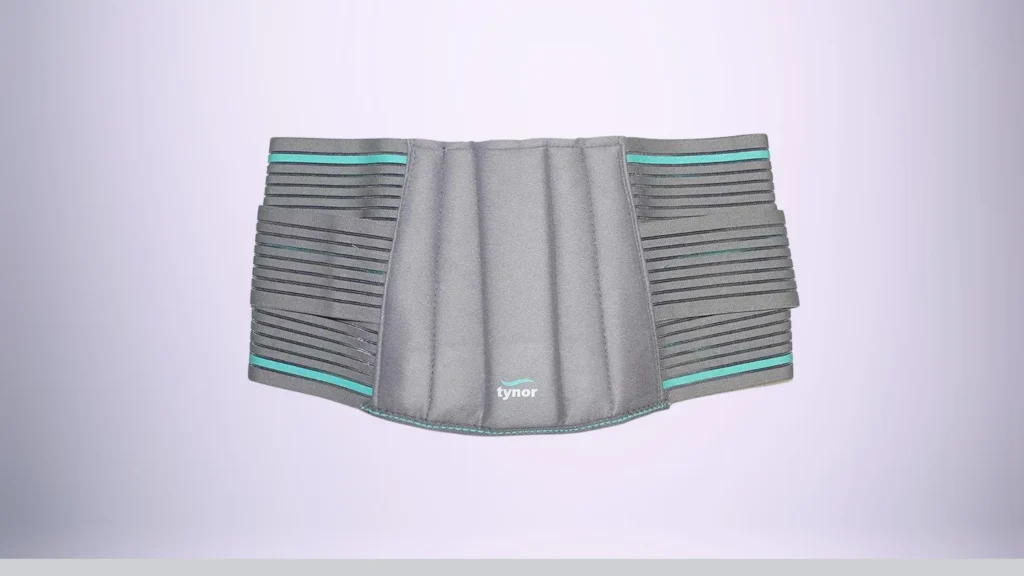
The Tynor Sacroiliac Belt is specified to address the pelvis instability and dysfunction of the sacroiliac joint that often is present during pregnancy. It delivers the best compression with the minimum apparent under the clothes to end up with comfortable pain relief. It is a great option for those who have lower back pain or discomfort in the pelvis.
Key Features:
- Targeted Pelvic Compression to stabilize the sacroiliac joint and reduce pain.
- Ergonomic design for comfort during extended wear, making it ideal for daily use.
- Durable and Breathable, allowing for all-day use without feeling hot or restrictive.
9. Isavela Maternity Belt
The Isavela Maternity Belt is a very adjustable pelvic support belt that offers compression to the hips, abdomen, and lower back. It can support most of the aches and pains during pregnancy and is especially helpful in providing pelvis stabilization without using firm braces.
Key Features:
- All-around Support for the pelvic region, hips, and lower back to alleviate discomfort.
- Comfortable and Lightweight material for easy wear throughout the day.
- Postpartum Use for recovery after childbirth, helping to realign the pelvic region and provide relief.
Which Pelvic Binder is Right for You?
Choosing the right pelvic binder depends on your specific needs during pregnancy. When your pain is mild, an adjustable maternity belt should do, such as this one offered by Amazon Essentials. But in case you have more extreme pelvic instability or pain, or pain in the sacroiliac joints, you will find that a stronger compression and targeting of support is provided by Serola or Tynor.
For those who are looking for versatile support that can be used both during pregnancy and postpartum, Belly Bandit and Gabrialla offer flexible options designed for ongoing care.
In the end, the best pelvic binder for your body and pregnancy requirements will depend on your healthcare provider.
Additional Tips for Using Pelvic Binders During Pregnancy
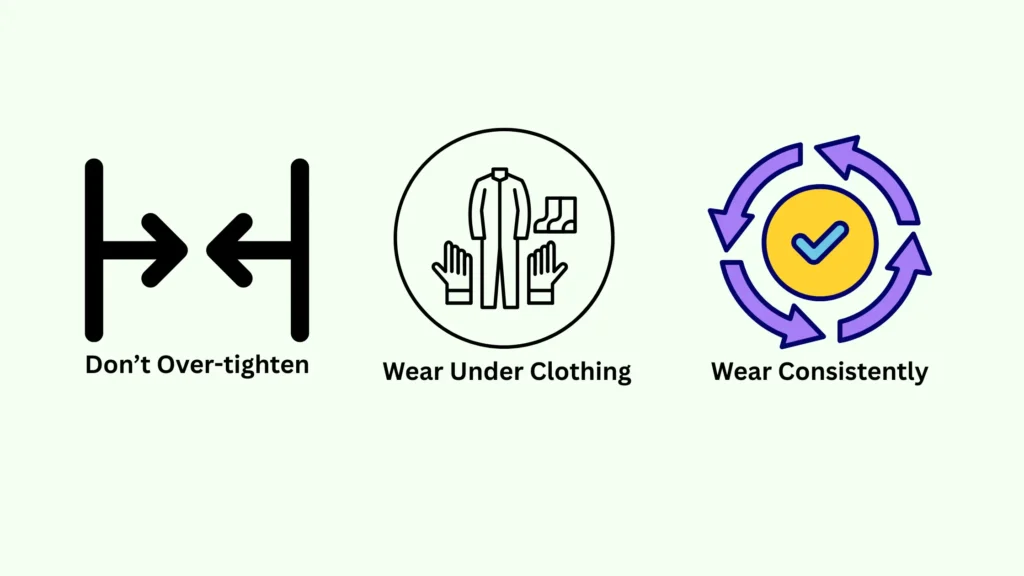
- Wear Consistently: For best results, wear your pelvic binder consistently, particularly during activities that place strain on your pelvic region, such as standing for long periods or walking.
- Don’t Over-tighten: Make sure your binder is comfortable, yet not too tight.. Too tight can be uncomfortable, cuts off circulation and/or restricts breathing.
- Wear Under Clothing: Many pelvic binders are designed to be worn under clothing, so you don’t need to worry about visibility when going out in public.
Application of Pelvic Binder: Practical Use and Tips
To get the most out of a pelvic binder, it must be incorporated into daily activities in addition to being worn. The following advice will help you use a pelvic binder in your routine:
When to Wear a Pelvic Binder
- During Physical Activity: When engaging in physical activities like prolonged standing or walking, wearing a pelvic binder can help avoid putting additional strain on the pelvis.
- In the Later Stages of Pregnancy, the binder becomes especially important as the pregnancy progresses, as the additional weight of the baby can lead to more significant pelvic discomfort.
- While Sleeping: Some pregnant individuals may benefit from wearing a pelvic binder while sleeping to reduce pelvic instability during rest.
FAQ Section
1. What is a pelvic binder used for during pregnancy?
In order to stabilize the pelvic area and alleviate any discomfort or instability brought on by the pelvic changes that occur during pregnancy, a pelvic binder is utilized.
2. How do I properly place a pelvic binder?
A pelvic binder should fit snugly across the pelvic joints after being wrapped around the hips and lower abdomen. Make sure the straps fit snugly but comfortably.
3. Can I use a TPod pelvic binder during pregnancy?
Yes, in situations where conventional binders might not be adequate, the TPOD pelvic binder can be used to specifically support pelvic instability during pregnancy.
4. Is the SAM pelvic binder safe for use during pregnancy?
The Sam Pelvic Binder is safe and effective for supporting the pelvis during pregnancy. It is made to be both comfortable and give the pelvic area the stability it needs.
5. How long can I wear a pelvic binder during pregnancy?
A pelvic binder can be worn for extended periods of time, but it’s crucial to take it off occasionally to look for any indications of skin irritation or discomfort. For tailored advice, always speak with your healthcare provider.
Final Thoughts on Pelvic Binders During Pregnancy
A pelvic binder might be an essential tool for treating pelvic discomfort and instability during pregnancy. For a comfortable and healthy pregnancy, these devices—which include the TPod, SAM, and traditional pelvic binders—provide much-needed support. Make sure you carefully follow the instructions because proper placement and application are essential to optimizing their benefits.
Let’s explore more on Pregnancy Must –
